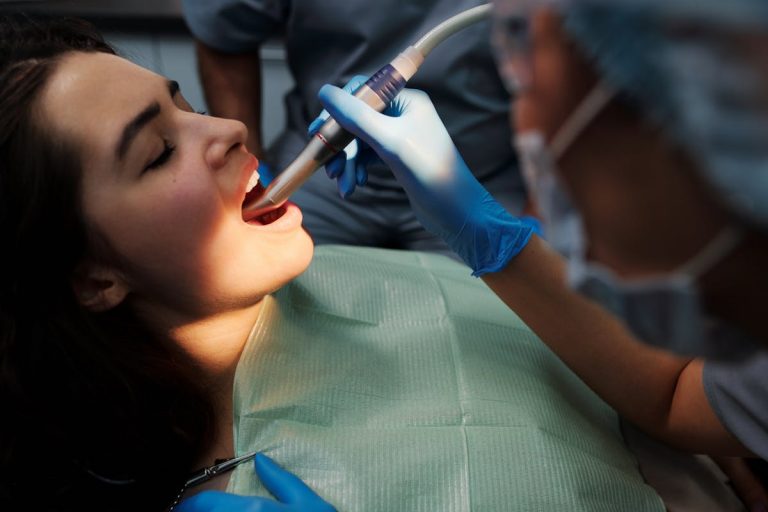Abdominal cramps can be a common, yet disruptive, occurrence when performing exercises like crunches. They can hinder your workout routine, causing discomfort and potentially leading to prolonged muscle strain. Many people perform crunches to lose belly fat, but it can lead to unwanted side effects if done incorrectly.
As crunches are a fundamental exercise for strengthening the core and reducing belly fat, it’s crucial to understand how to prevent these cramps. This process enhances your workout’s effectiveness and ensures you maintain a consistent and safe exercise regimen.
With proper technique and adequate preparation, you can perform crunches, including kick-down crunches, more efficiently and without worrying about painful cramps. This article will discuss how to prevent ab cramps while doing crunches and the benefits of incorporating these exercises into your routine.
What are Ab Cramps?
Abdominal muscle cramps, often called ‘ab cramps,’ are sudden, involuntary contractions of one or more of your abdominal muscles. These cramps can range from mild twinges to severe spasms, leaving your muscles feeling tight or knotted. The sensation often occurs abruptly during exercise, causing discomfort that may be felt anywhere in your abdomen. Some people describe the feeling as a sharp, stabbing pain, while others report a dull, aching sensation.
The intensity and duration of these cramps can vary, but they typically subside after a few seconds or minutes. It’s important to note that a healthcare professional should address persistent or excruciating cramps, as they may indicate a more serious underlying condition. However, with proper precautions, most ab cramps can be avoided altogether.
Causes of Abdominal Muscle Cramps
Several common factors can contribute to abdominal muscle cramps during crunches:
- Dehydration: One of the leading causes of muscle cramps, dehydration can occur when your body doesn’t have enough fluids to function properly. When you exercise, especially in warm weather, your body loses water through sweat and respiration. If not replenished adequately, this loss can lead to cramping.
- Overexertion: Another common cause of muscle cramps is overexertion, or pushing your body beyond its physical capacity, which can lead to strain and fatigue. This exhaustion can affect the nerves that control your muscles, causing them to contract involuntarily.
- Poor muscle conditioning: If your abdominal muscles are strong or deconditioned, they may need help to handle the demands of crunches. This lack of strength can contribute to muscle fatigue and cramping.
- Lack of proper warm-up: Skipping a good warm-up before exercise can be problematic for some individuals. Without adequate preparation, your muscles may not be ready for the increased workload, leading to cramps.
- Nutrient deficiencies: Electrolyte imbalances, particularly low levels of potassium, magnesium, and calcium, can contribute to muscle cramps. These minerals are essential for proper muscle function and nerve impulses.
- Incorrect form and technique: Performing crunches with the wrong form and technique can put undue strain on your abdominal muscles, leading to cramping. This improper positioning can also stress other muscles in the body, causing them to compensate and potentially cramp.
- Muscle fatigue: Overworking the abdominal muscles without proper rest can lead to muscle fatigue, increasing the likelihood of cramping. Rest is crucial for muscle recovery and avoiding overuse injuries.
It’s essential to be aware of these factors and take preventative measures to avoid abdominal muscle cramps during workouts.
Importance of Preventing Ab Cramps
Preventing abdominal cramps is vital for a variety of reasons:
- Ab cramps can significantly disrupt your workout routine, leading to discomfort and discouragement that may deter you from regular exercise.
- Repeated cramping can result in muscle strain or injury, potentially sidelining you from your fitness goals for an extended period.
- Persistent cramping could indicate an underlying health issue that needs medical attention.
Aside from the health risks, ab cramps could also hinder your progress in strengthening your core and reducing belly fat. Consistently performing exercises like crunches without experiencing cramps allows for a more effective workout, as it lets you focus on proper form and technique, leading to better results. Regular and cramp-free exercise can boost your stamina, improve your posture and balance, and enhance overall body function and athletic performance. Thus, investing the time and effort into understanding and implementing strategies to prevent ab cramps is key to a successful and healthy fitness journey.
Ways To Prevent Ab Cramps While Doing Crunches
To minimize the risk of abdominal muscle cramps during crunches, consider the following strategies:
- Stay hydrated and drink enough water throughout the day. Keep your body adequately hydrated by drinking plenty of fluids before, during, and after your workout. This can help prevent muscle cramps that are often caused by dehydration.
- Warm up properly with light cardio and dynamic stretching. A comprehensive warm-up prepares your muscles for the workout ahead. Begin your training session with a brief cardio activity, followed by dynamic stretching for the muscles you will use during your workout. This will help your muscles prepare for the increased workload, reducing the risk of cramping.
- Gradually increase the intensity and duration of your crunches. Don’t push yourself too hard, too fast. Gradually increase the intensity and duration of your crunches as you become stronger and more conditioned. This will help prevent muscle fatigue and overexertion, which can lead to cramping.
- Ensure proper form and technique, including breathing. Proper form is essential when performing crunches. Ensure your back and neck are properly supported, and avoid straining your neck or shoulders during the exercise. Additionally, focus on proper breathing techniques to ensure adequate oxygen supply to your muscles.
- Include balanced nutrition in your diet, especially electrolytes. A balanced diet is crucial for proper muscle function and electrolyte balance. Ensure you consume enough potassium, magnesium, and calcium-rich foods to avoid mineral deficiencies contributing to muscle cramps.
- Stretch and cool down after your workout. After a workout, take the time to cool down and stretch out your muscles. This will help reduce tension in your muscles and promote quicker recovery.
- Consider supplements or vitamins if necessary. If you are experiencing prolonged or severe muscle cramps, speak to your healthcare provider about potentially taking supplements or vitamins to address any deficiencies.
Remember, if cramps persist, it’s important to consult with a healthcare professional to rule out any potential medical issues.
Bottom Line
Abdominal cramps during crunches can be an uncomfortable disruption to your exercise routine. These cramps are often caused by dehydration, overexertion, poor muscle conditioning, lack of a proper warm-up, nutrient deficiencies, incorrect form and technique, and muscle fatigue.
However, you can prevent these cramps with strategies such as staying hydrated, warming up properly, gradually increasing exercise intensity, using proper form and breathing, maintaining a balanced diet, cooling down and stretching after workouts, and considering supplements if necessary. It’s crucial to consult a healthcare professional if cramps persist, as they could indicate a more serious issue.
Incorporating these preventative measures into your fitness routine is an investment in your overall well-being. A cramp-free workout enhances your exercise performance and contributes to your daily comfort and long-term health. Embrace these practices for a more enjoyable and productive workout, leading to stronger abdominal muscles and an improved physique. Remember, every step you take to prevent abdominal cramps puts you closer to your fitness goals and a healthier lifestyle. Stay motivated, stay consistent, and the results will follow. Keep striving, and keep thriving!






